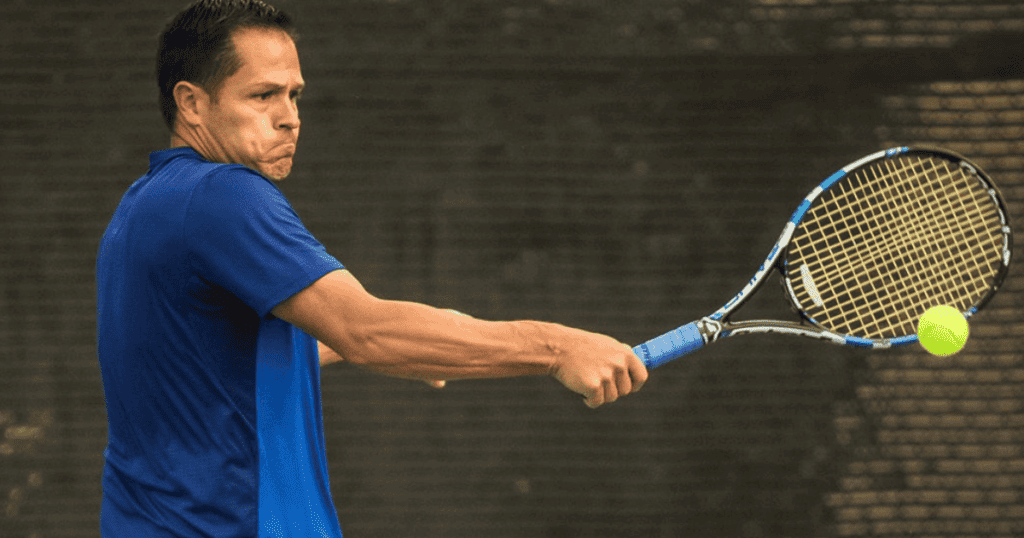The Brilliance of the Backhand
If you’ve ever watched professional tennis, squash, or padel matches, you’ve likely witnessed a common and powerful shot in action: the backhand.
This stroke has been perfected by numerous athletes and stands as a testament to the sheer potential of a player’s skill set.
Yet, even if you’re a casual player or a spectator, understanding the mechanics and relevance of the backhand can greatly enhance your appreciation of racket sports.
Let’s delve into the world of backhands, learn when to use it, and why it’s such an essential tool in every player’s repertoire.

What is a Backhand?
At its core, a backhand is a shot that a player makes by swinging their racket from the side of their body opposite their dominant hand.
So, if you’re right-handed, you’d swing from your left side to hit a backhand.
It can be executed with one or both hands on the racket handle, depending on the player’s strength, preference, and the particular sport.
When to Use the Backhand
- Cross-court Shots: When an opponent sends a ball to your weaker side (usually the backhand side), rather than contorting your body to play a forehand, the backhand is your most natural and efficient response. Using the backhand for cross-court shots not only maintains the rally but can also catch your opponent off-guard.
- Defensive Play: Often, when a player is pushed to the limits of the court, the backhand becomes a defensive weapon. It allows the player to return shots they otherwise wouldn’t reach with a forehand, especially when running or stretched out.
- Drop Shots: The backhand can be a subtle tool. When your opponent is at the back of the court, a soft, well-placed backhand drop shot can make them scramble to the net, often unsuccessfully.
- Down-the-line Winners: This is a favorite for many professionals. When the ball is approaching the backhand side, and the opposite side of the court is open, a swift backhand down-the-line can secure a winning shot.
Benefits of a Strong Backhand
Having a potent backhand adds an element of unpredictability to a player’s game.
If an opponent can’t target a weak backhand, they’re forced to play more neutrally, giving the backhand-proficient player a strategic advantage.
Moreover, a versatile backhand can be used for various spins.
Topspin backhands can dip over the net and land with precision, while a slice backhand can float over the net, staying low and causing difficulty for the opponent.
Tips to Perfect Your Backhand
- Grip: For a two-handed backhand, the dominant hand’s knuckles should be placed against the back bevel of the racket handle, while the non-dominant hand is placed above. One-handed backhands generally use an eastern or continental grip.
- Stance: Position yourself sideways to the net, keeping your feet shoulder-width apart for better balance and rotation.
- Follow Through: Whether you’re going for a slice or topspin, ensure your follow-through is smooth. For topspin, the racket should finish over your shoulder, while for a slice, it should end up more in front of you.
- Practice: Like any skill, practice is crucial. Consistent drills will embed the proper mechanics in your muscle memory.
Summary
The backhand, whether in tennis, squash, or badminton, is more than just a stroke. It’s a strategic asset, a defensive mechanism, and often, an unexpected winner.
Mastering the backhand can elevate a player’s game from being predictable to being versatile and dynamic.
For spectators, recognizing the beauty and prowess of a well-executed backhand adds a new layer of appreciation to the sport.
Whether you’re aiming to be the next tennis champion or simply enjoy watching from the stands, the backhand stands as a testament to a player’s skill, strategy, and commitment to the game.